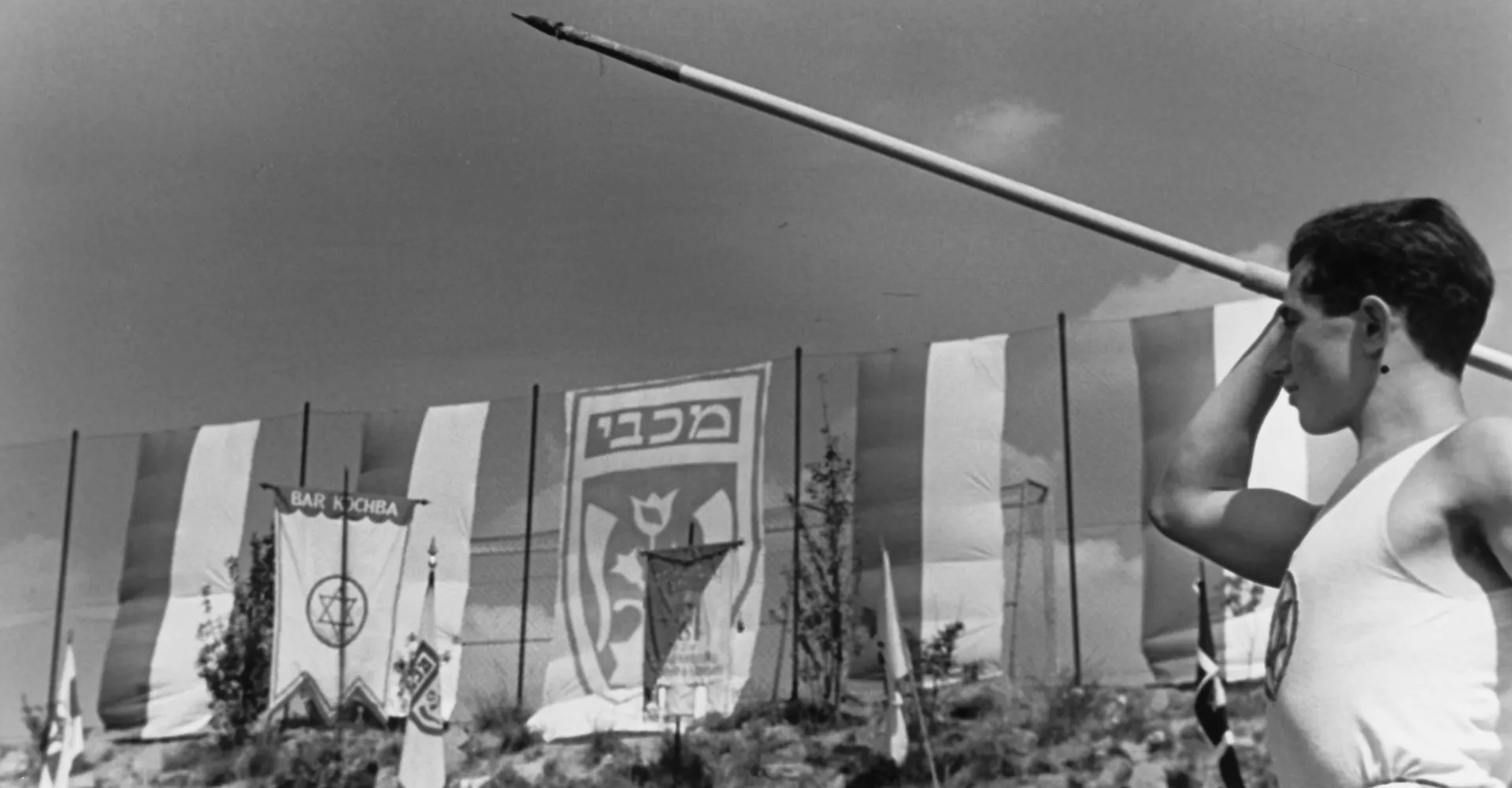
Our Top “Muscle Jews”
At the Second Zionist Conference on 28 August 1898 in Basel, Switzerland, Max Nordau dedicated a passionate speech to the subject of muscular Judaism. The doctor, publicist and co-founder of the young Zionist movement said:
“Zionism breathes new life into Judaism. This much I am sure of. It does this morally by refreshing the ideals of the People, physically by the physical education of our offspring, who shall reestablish a bygone muscular Judaism.”
This should therefore not only replace the widespread image of the weak Jew but also support the creation of a new, physically strong “Judaism.” It didn’t take long for this to be realized: just three months following Nordau’s address, the first Jewish sports association was founded in Berlin. It was named Bar Kokhba, after the leader of Judean Jewish resistance against Rome from 132–135 ACE. In a report titled, “Muscular Judaism,” for the new association newspaper, Jüdische Turnzeitung, Nordau described it as the
“last, globally historic embodiment of a battle-hardened, weapon-ready Judaism.” He called on Jews to “connect with our oldest traditions: (Then) we’ll again be broad-chested, strong armed, bold-looking men.”
Herbert Sonnenfeld: Boxer portrait, Berlin 1935; Jewish Museum Berlin, purchased with funds provided by Stiftung DKLB
Herbert Sonnenfeld: Javelin thrower at the Grunewald athletic grounds, Berlin, ca. 1938; Jewish Museum Berlin, purchased with funds provided by Stiftung DKLB
Nordau’s appeal was heeded. The Jewish sports movement grew quickly in popularity. In 1903, the umbrella organization, Maccabi, was founded – again a reference to the fighting Jews of a distant past: the Maccabees waged a successful struggle from 168–165 BCE against the Seleucid Empire and restored the desecrated Temple in Jerusalem, a story retold each year on Hanukkah. By the 1930s, Maccabi membership had grown to 40,000 in 24 countries, and its first international competition, the Maccabiah, took place in Tel Aviv in 1932.
The Jewish Museum’s archive is home to a report from that event, written by Felix Simmenauer, a relay runner on the German team:
“The stadium is completely full; I estimate 30-40,000 spectators. (…) The president of the International Maccabi Association now proclaims, ‘I have the honor of announcing the first ever Maccabiah.’ Trumpets blast, the scouts hoist their flags, drums beat. A dovecote is opened and the doves fly with a small sign that reads, ‘The first Maccabiah 5692 is open.’ The bands play, the flag bearers return to their national teams, and so begins the teams’ march, their flags unfurled, past the association’s president and the grandstands. The procession is a spectacular image and the crowd is greatly impressed.”
Herbert Sonnenfeld: Six women fencers at Maccabi’s Theodor Herzl sporting event, Berlin, 19 July 1936; Jewish Museum Berlin, purchased with funds provided by Stiftung DKLB
As I'm writing this text the 14th European Maccabi Games will soon begin in Berlin. This is the first time Europe’s largest Jewish sporting event will be held in Germany – reason enough to present here some of our “muscle Jews.” All photos were taken by photographer Herbert Sonnenfeld between 1935 and 1938 – a time period when Jewish athletes had already been banned from public sports clubs and inevitably turned to their own.
Felix Simmenauer ends his report of the first Maccabiah with a concluding note:
“It was a huge and incredible celebration, and I am thrilled to have helped make it happen. The Maccabiah was less important from a combat sports perspective. It was more valuable in the parade, the mass presentation, the march. It was a massive celebration on par with German sporting events. The entire organization was extremely precise, and I don’t know if we in Germany could have put together a Jewish sporting event as well as this.”
We wish the leadership of the European Maccabi Games in Berlin a good start!
Aubrey Pomerance, archive director, hunting for berries in the Rocky Mountains during the Maccabi Games
Herbert Sonnenfeld: Youth marching at the Bar Kokhba Hakoah Berlin’s youth sporting event at the Grunewald athletic grounds, Berlin, 28 June 1936; Jewish Museum Berlin, purchased with funds provided by Stiftung DKLB
Citation recommendation:
Aubrey Pomerance (2015), Our Top “Muscle Jews”.
URL: www.jmberlin.de/en/node/9307

